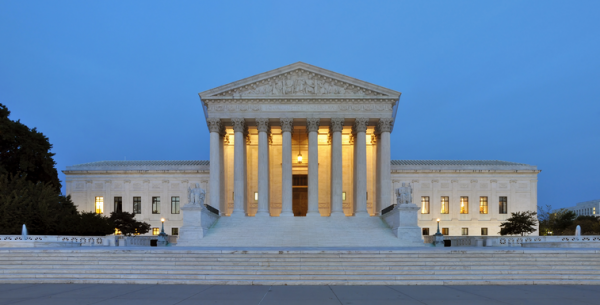 Parler
Parler Gab
Gab
- Supreme Court issues 8-0 ruling limiting federal judges’ authority to block infrastructure projects under NEPA.
- Case Seven County Infrastructure Coalition v. Eagle County overturns D.C. Circuit Court decision halting a Utah oil rail project.
- Justices stress agencies must face “broad zone of reasonableness” judicial deference, not micromanagement.
- Trump administration and industry laud decision; environmental groups warn of increased climate risks.
- Case reinforces pattern of Supreme Court rolling back environmental regulatory power.
The ruling’s details: Defining NEPA’s scope in the modern era
The Court’s majority opinion, penned by Justice Brett Kavanaugh, emphasized that agencies need only evaluate environmental effects “directly tied” to the infrastructure project under review. “NEPA does not allow courts, ‘under the guise of judicial review,’ to delay or block agency projects based on the environmental effects of other projects,” he wrote, adding that agencies should not be required to analyze “separate projects’ environmental effects” even if linked to the proposed project. The case centered on a railway connecting Utah’s Uinta Basin to national rail networks, which would transport billions of gallons of crude oil. Lower courts had required federal agencies to assess secondary impacts such as increased drilling and downstream refinery emissions. The Supreme Court overturned this, stating agencies should focus solely on “the project at hand,” spelling a stark departure from decades-old interpretations of NEPA’s “consider every impact” ethos. Justice Sonia Sotomayor concurred but argued from a different angle, arguing agencies need address only effects “for which they are responsible.” Neither the majority nor Sotomayor’s concurrence, however, altered the outcome: Courts must now defer to agency decisions unless they fall outside a “broad zone of reasonableness.”Partisan divides and broader policy implications
Republicans welcomed the decision as a check on judicial overreach. Sen. Charles Grassley (R-Iowa), the Senate Judiciary Committee Chairman, praised the ruling as curtailing “universal injunctions,” which he called “unconstitutional abuses of judicial power.” Grassley criticized prior rulings, such as a D.C. district judge’s halt of Trump’s voter-ID executive order, as overreach. The verdict also supports President Trump’s “America First Energy Plan,” which seeks to streamline NEPA reviews, cut costs and accelerate construction of pipelines, roads and railways. Environmental groups condemned the outcome. Rep. Diana DeGette (D-Colo.) warned the decision could lead to “environmental catastrophe,” citing risks of oil spills and climate impacts. Earthjustice’s Sam Sankar labeled the ruling a “green light” for agencies to ignore “foreseeable consequences,” while the Center for Biological Diversity’s Wendy Park predicted worsened pollution and biodiversity loss. Industry groups praised the ruling, with the American Forest Resource Council’s Nick Smith applauding NEPA reform to combat “weaponized lawsuits” that delay projects for years.NEPA’s evolving role in the climate era
Signed by President Nixon in 1970, NEPA was designed to ensure federal agencies evaluate environmental impacts of major projects. While environmentalists view the act as foundational, critics — particularly in conservative circles — argue it has been weaponized to stifle economic growth. This ruling injects new gravity to Nixon’s original intent: informational transparency, not regulatory paralysis. It also follows a series of recent Court decisions shrinking federal authority. Just last week, in West Virginia v. EPA, the Court curbed the agency’s power to regulate greenhouse gases. The conservative trio of Kavanaugh, Roberts and Thomas dominate these outcomes, signaling a sustained push to narrow federal regulatory authority.A new era for American infrastructure and environmental governance
The Supreme Court’s Seven County ruling redefines the balance between environmental safeguards and infrastructure development, shifting judicial deference toward federal agencies. While proponents argue this modernizes NEPA for an era demanding rapid energy solutions, opponents warn it risks ecological harm. As Congress debates climate legislation and regulatory rollbacks, this case underscores the judiciary’s pivotal role in shaping America’s environmental and economic future — one where project approvals proceed, but at what environmental cost? Sources for this article include: YourNews.com FoxNews.comPoll: U.S. no longer seen as Russia’s top enemy
By Laura Harris // Share
Brazilian comedian sentenced to JAIL TIME over stand-up routine jokes
By Ramon Tomey // Share
U.K. Labor government uses immigration failures to justify digital ID rollout
By Laura Harris // Share
DHS shuts down TSA watchlist program amid allegations of political targeting
By Laura Harris // Share
Trump administration rescinds Biden-era EMTALA guidance on emergency abortion care
By Laura Harris // Share
U.S. Army surpasses 2025 recruiting goal four months ahead of schedule
By Laura Harris // Share
Governments continue to obscure COVID-19 vaccine data amid rising concerns over excess deaths
By patricklewis // Share
Tech giant Microsoft backs EXTINCTION with its support of carbon capture programs
By ramontomeydw // Share
Germany to resume arms exports to Israel despite repeated ceasefire violations
By isabelle // Share










